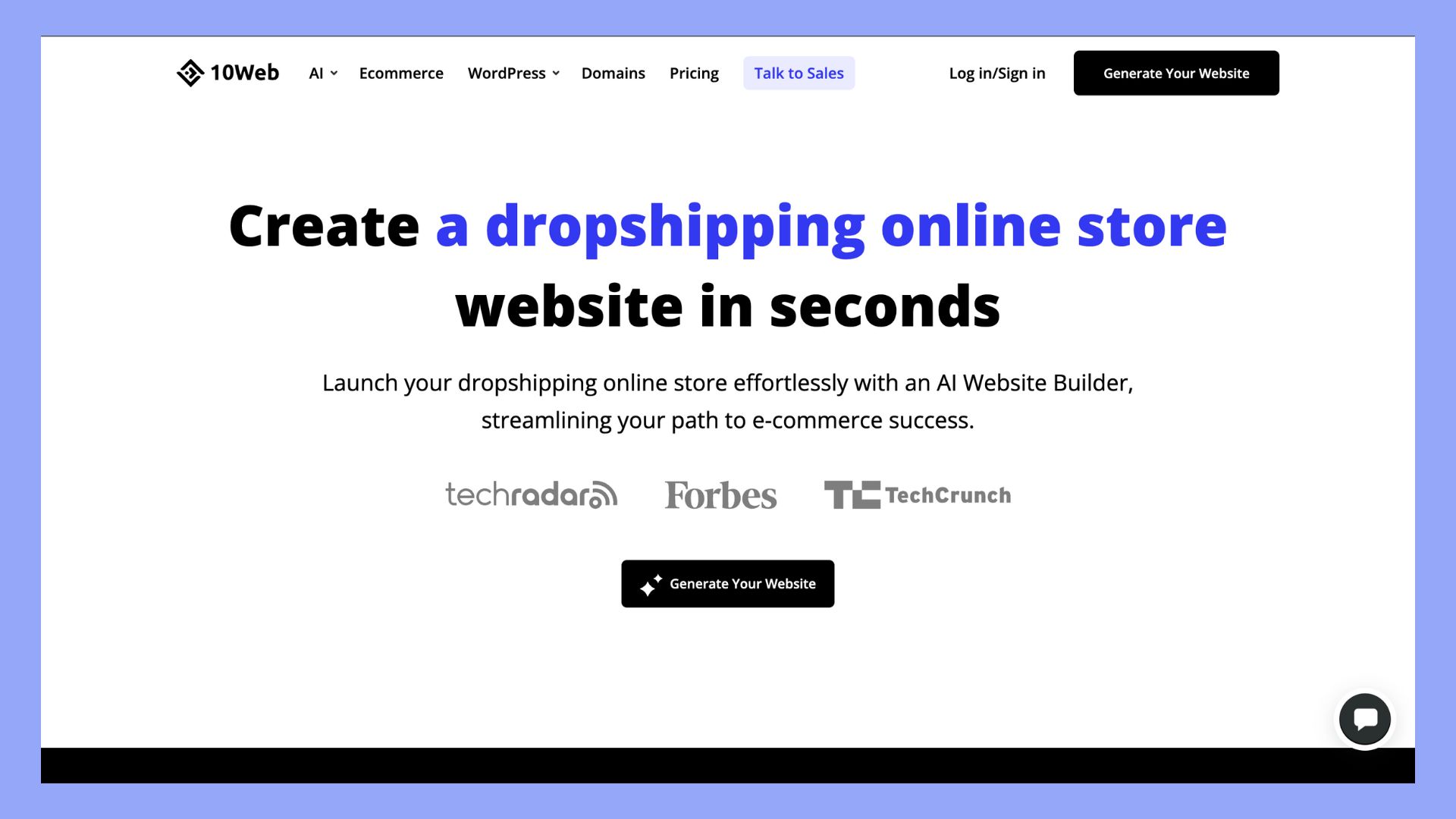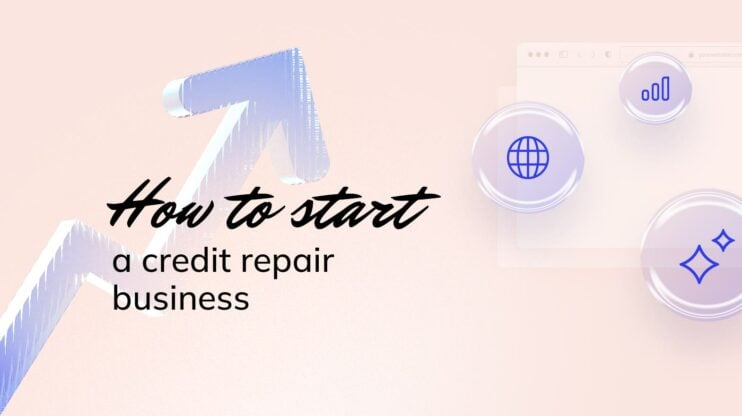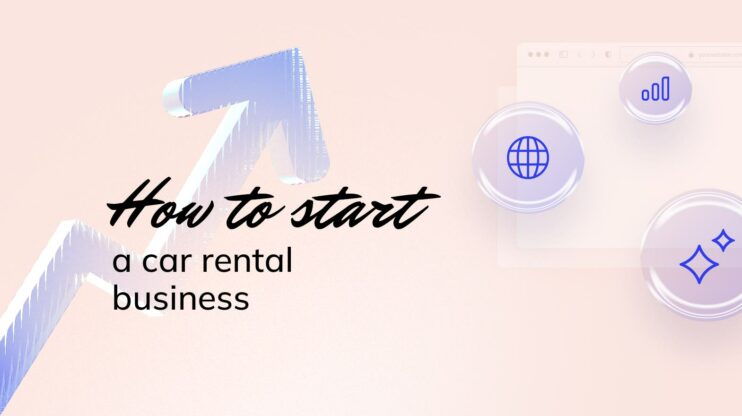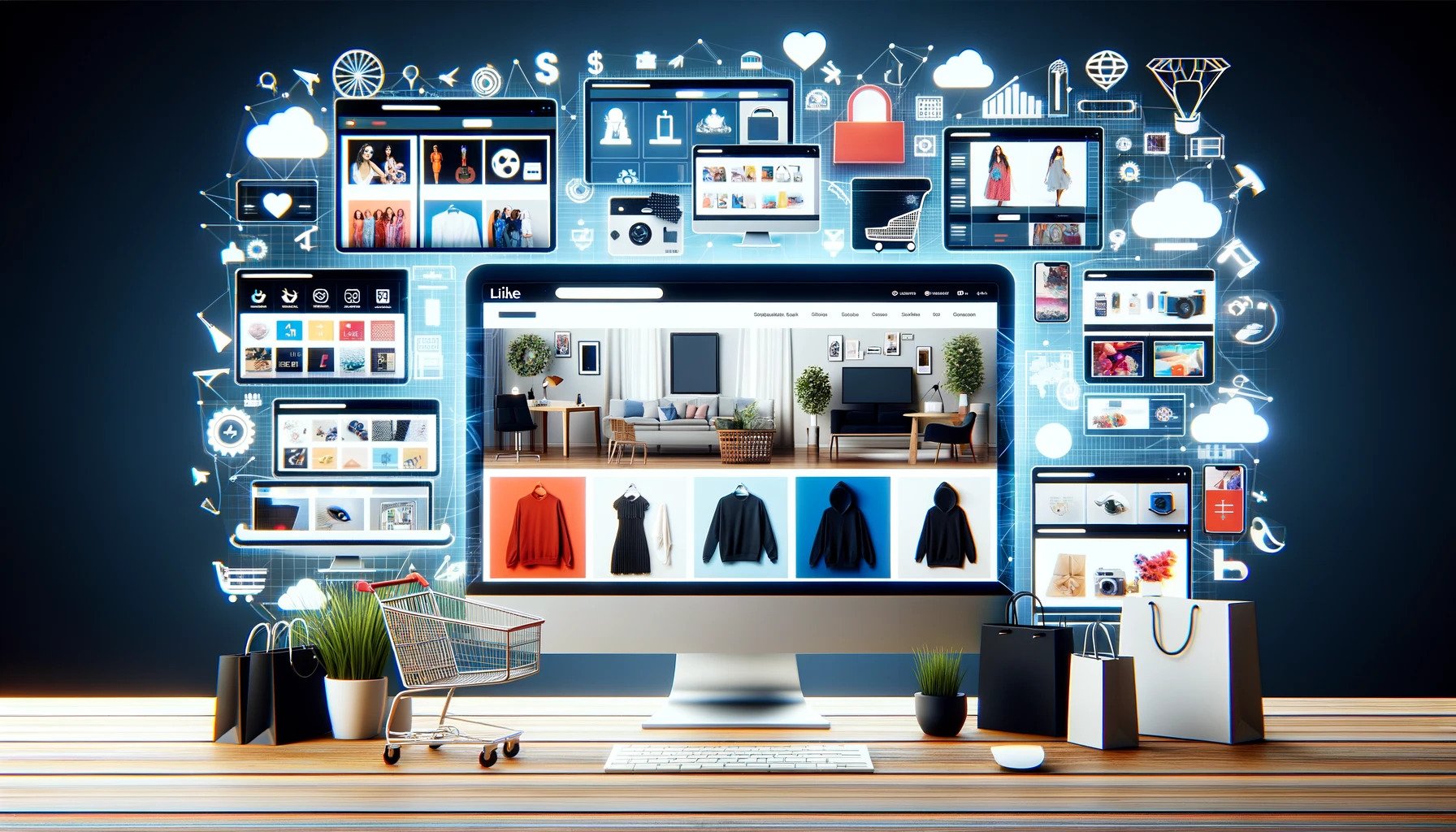Dropshipping is a crowded market, with a couple of its biggest challenges being reliable suppliers and on time shipping that does not cost you your entire earnings. It is, however, as the saying goes, “doable.” What if you want to learn how to start dropshipping for free or with little initial investment? It may be slightly more difficult, but doable.
Starting a dropshipping business with no money is achievable by following seven straightforward steps. In the following practical guide, we will look at how to launch your venture without any initial investment. We will also cover essential strategies such as selecting a niche, finding reliable suppliers, and marketing your products effectively. Let’s dive in and turn your dropshipping dream into a reality.

Create your online store in minutes!
Looking to sell online? Develop and launch your store with 10Web AI Ecommerce Website Builder.
Stage 1: Understanding a dropshipping business
Dropshipping allows you to run an online store without holding inventory or producing goods. With dropshipping, you facilitate the purchase of goods from less known sources by marketing what’s available outside of your target audience’s area. If you’re starting a dropshipping business, it’s important to explore the business model, understand profit margins, and choose the right ecommerce platform.
Step 1: Exploring the dropshipping business model
Dropshipping involves selling products without owning the inventory. You set up an online store and list products from suppliers. When a customer makes a purchase, you order the product from the supplier, who then ships it directly to the customer. This model has low initial overhead costs since you don’t need to invest in inventory or shipping upfront. The only major costs involved at first are spending time advertising the goods you want to sell.
A clear advantage is that you can offer a wide variety of products without needing a warehouse. However, supplier reliability and shipping times can affect customer satisfaction. To start, choose a reliable supplier to ensure product quality and timely delivery.
Step 2: Evaluating profit margins and costs
Understanding profit margins in dropshipping is crucial. Your profit margin is the difference between the price you charge your customers and the cost of the product and shipping from your supplier.
For example, if a product costs $10 with $2 shipping from the supplier and you sell it for $20, your profit margin is $8. There may be other costs to account for in practice, such as platform fees, marketing, and transaction fees.
Some platforms offer free plans, but most charge monthly fees. WooCommerce, which is an ecommerce platform that works with WordPress, can be cost-effective but does require hosting and additional setup. Making sure to analyze all these costs helps you maintain profitability as you can set your product prices to cover any overhead you do encounter. Being detail-oriented with costs and expenses is important, especially if you’re trying to start dropshipping for free.
Step 3: Differentiating between ecommerce platforms
Choosing the right ecommerce platform is key to a successful dropshipping business. Shopify is very popular due to its ease of use, extensive app store, and customer support. WooCommerce, paired with WordPress, offers more customization and is technically a free plugin.
For beginners, the 10Web AI Ecommerce Website Builder might be easier to set up as it provides AI-driven tools to create your dropshipping platform quickly and easily. WooCommerce is another option, but typically requires more technical skills. Evaluate the features, costs, and ease of use of these platforms to determine which best fits your needs.
To get started with your dropshipping website, create your store and link it with reliable suppliers. Make sure your site is user-friendly to attract and retain customers. If you’re not sure where to start when designing your website, be sure to check out our article on ecommerce website examples to get inspired.


Create your online store in minutes!
Looking to sell online? Develop and launch your store with 10Web AI Ecommerce Website Builder.
Stage 2: Start a dropshipping business with no money
Starting a dropshipping business with no money is an achievable goal with the right strategy and dedication. It’s important to stay both vigilant and attentive initially, as oversight can quickly accrue costs. Here are seven essential steps to guide you through the process of launching your own dropshipping venture without any upfront investment.
Step 1: Select a profitable niche
Selecting the right niche is crucial for the success of your dropshipping business. You need to choose a niche with high demand, low competition, and something you are passionate about and knowledgeable in.
Using tools like Google Trends
To find a winning product, start by using Google Trends to see what products are currently popular. This tool shows you the search interest over time for specific keywords. Look for products that have a consistent or growing number of searches.
Using Google Trends, you can spot emerging market shifts and avoid saturated markets. Focus on niches that are gaining popularity. Search for related terms to ensure your niche has broad interest.
Analyzing competition and demand
It’s important to analyze the competition and demand in your chosen niche. You want to find a balance where there’s enough demand to make sales, but not so much competition that you can’t stand out.
Check major marketplaces like Amazon and eBay to see how many sellers offer similar products. Look at the number of reviews and ratings to gauge customer satisfaction. Use tools like SEMrush or Ahrefs to understand competition levels for your keywords.
The importance of passion and knowledge
Choosing a niche you’re passionate about can make running your dropshipping business significantly easier. When you are excited about the products you sell, it shows in how you market and present your store. Your knowledge will help you better understand the needs and questions of your customers.
Select something you enjoy learning and talking about. Your enthusiasm and expertise will make your business more authentic and engaging. Passion helps you stay motivated through the ups and downs of running a dropshipping business.
Step 2: Find the right suppliers
Choosing the right dropshipping suppliers is crucial for your business. Let’s go over how to partner with reliable suppliers and use platforms like AliExpress and SaleHoo.
Partnering with dropshipping suppliers
When starting a dropshipping business, it’s important to find reliable suppliers. Consider their credibility, shipping times, and customer support. Look for suppliers with positive reviews and strong track records. You can find suppliers like this on platforms like Spocket or Wholesale Central.
Once you find potential suppliers, assess their product quality. Ordering sample products helps you ensure they meet your standards. It also gives you a clearer idea of shipping times and packaging quality.
Communicate with your suppliers — they will likely be as eager to sell their products to you as you are to your customers. Establishing a good relationship can help you get better deals and solve issues faster. Prompt and clear communication makes sure both you and your suppliers are on the same page.
Using AliExpress and SaleHoo
AliExpress is a popular platform for dropshipping. It offers a wide range of products and competitive prices. Suppliers on AliExpress often offer ePacket shipping, which is faster and cheaper. You can start by finding products with good reviews and high ratings to ensure quality.
SaleHoo is another great resource. It is a directory of verified suppliers, simplifying your search for reliable partners. SaleHoo provides access to suppliers offering quality products with reliable shipping methods. Plus, it has a supportive community and educational resources to help you succeed.
By leveraging these platforms, you can find the best suppliers and products for your dropshipping business, ensuring smooth operations and satisfied customers.
Step 3: Craft your brand
Creating a strong brand is essential to stand out in the crowded dropshipping market. This involves choosing a memorable name and designing a logo, as well as establishing what makes your store unique.
Choosing a name and creating a logo
Select a name that is easy to remember, reflects your niche, and has an available domain name. Your store’s name should be simple and unique to avoid confusion with other brands. Use online tools to check domain name availability and brainstorm variations if your first choice is taken.
Next, design a logo that visually represents your brand. You don’t need to hire a professional designer; free online tools like Canva can help you create a polished logo. Your logo should be clear, scalable, and versatile for use on different platforms such as your website, social media, and marketing materials.
Establishing a unique selling proposition
Identify what sets your store apart from competitors. Your unique selling proposition (USP) highlights a specific benefit or feature that makes your products more desirable. This could include free shipping, eco-friendly products, or exceptional customer service.
Clearly communicate your USP on your website and marketing materials. It should be concise and resonate with your target audience. Use bullet points or bold text to make it stand out on your web pages, ensuring visitors immediately see what makes your store special.
By focusing on these aspects, you can craft a brand that attracts and retains customers.
Step 4: Build your online store
To launch a successful dropshipping business with no money, you need to set up an online store. This section covers how to create a website using 10web, leverage free ecommerce platforms, customize themes, and set up payment gateways.
Create an online store using 10Web
10Web provides a user-friendly way to create an ecommerce website even if you have no coding skills. It offers a free option that allows you to get started without any upfront cost. For a dropshipping business, we recommend using the 10Web Ecommerce AI Website Builder as it has features such as automated hosting, security, automated daily backups, and more. 10Web also uses WordPress to generate websites while integrating WooCommerce, which makes managing an ecommerce website easier.
Here are the steps you need to follow to create a dropshipping website using 10Web:
- Go to the 10Web Ecommerce Website Builder.
- Enter your business name and a short description then click Generate.
- Check the AI generated name and description, make your adjustments then click Next.
- Type in your product categories or use the suggestions offered by the AI and click Next.
- Adjust and edit your website structure and design.
- Click Generate to create your website.
- Fill in your information to start the generation.
By following these steps, you can have a basic website ready to go live quickly.

Create your online store in minutes!
Looking to sell online? Develop and launch your store with 10Web AI Ecommerce Website Builder.
Customizing themes and setting up payment gateways
Customizing your store’s theme is essential to make it visually appealing and user-friendly. Additionally, setting up payment gateways enables you to receive payments securely.
- Choose a theme: Many ecommerce platforms offer free themes. Pick one that aligns with your brand.
- Customize the theme: Tailor the colors, fonts, and layout to match your brand identity. Ensure that your store is easy to navigate.
- Set up payment gateways: Link your store with secure payment gateways like Stripe, PayPal, or other region-specific options. If you are a 10Web user, you can use 10Web Payments, which comes with the ecommerce plan. Go to the 10Web dashboard and access Payment methods, and click on Set Up or Manage to configure a specific payment method. You also have the option to test the payment after setting it up to ensure everything works correctly.
Step 5: Attract customers without a budget
To attract customers without spending money, you can leverage social media platforms and implement organic SEO tactics. These methods are cost-effective and can bring significant results if done correctly.
Leveraging social media platforms
Using social media platforms like Facebook, Instagram, and X (Twitter) is a great way to attract customers. Here are steps to maximize this:
- Create engaging content: Post regularly using photos, videos, and stories that resonate with your target audience.
- Interact with your audience: Reply to comments and messages quickly to build relationships.
- Join groups and communities: Participate actively in groups related to your niche to increase your visibility.
- Collaborate with influencers: Partner with micro-influencers who can promote your products to their followers.
With time and consistent effort, social media can help draw a large number of customers to your store.
Implementing organic SEO tactics
SEO is essential for driving traffic to your dropshipping store without a budget. Follow these steps:
- Keyword research: Find keywords that your potential customers are searching for. Use tools like Google Keyword Planner.
- Optimize product descriptions: Include these keywords naturally in your product titles and descriptions.
- Create valuable content: Write blog posts or guides that help and inform your customers, integrating relevant keywords.
- Build backlinks: Collaborate with other websites to get links back to your site, improving its authority.
Organic SEO is a powerful way to attract customers searching for your products online, ensuring long-term traffic.
Step 6: Market your products
To succeed in dropshipping, you need to effectively market your products. Key strategies involve creating impactful marketing plans and leveraging email marketing campaigns.
Creating high-impact marketing strategies
Effective marketing plans begin with identifying your target audience. Use tools like Google Trends and Facebook Audience Insights to find out what your potential customers are interested in. Run targeted ad campaigns on platforms like Facebook and Google. Set a budget and select your target demographics to ensure your ads reach the right people.Create engaging content that resonates with them. High-quality product images, compelling product descriptions, and engaging social media posts are crucial.
Use affiliate marketing to expand your reach. Partner with bloggers and influencers who can promote your products to their followers. Offer them a commission for every sale they generate.
The role of email marketing in dropshipping
Email marketing is an essential tool for staying connected with your customers. Build an email list by offering discounts or free content in exchange for email sign-ups.Create an email marketing plan that includes regular newsletters and promotional offers. Tools like Mailchimp and Sendinblue can help you automate and manage your email campaigns.
Personalize your emails by addressing customers by their names and providing product recommendations based on their purchase history.Send out abandoned cart reminders to encourage customers to complete their purchases. Keep your emails brief, visually appealing, and include clear call-to-action buttons like Buy Now or Shop Now.
Step 7: Optimizing operations
Optimizing your dropshipping operations can significantly improve your business efficiency and lead to happier customers. By effectively managing inventory and providing excellent customer service, you can make sure that your business runs smoothly.
Managing inventory and customer orders
Effectively managing your inventory and customer orders is important for keeping your store in good shape. Since you don’t hold the inventory yourself, you need to ensure your suppliers have enough stock.
Step-by-step instructions:
- Use inventory management software: Tools like Oberlo or Spocket can help you keep track of your products and their availability. Nevertheless, if you use 10Web, you will be able to manage your inventory from the same dashboard, which makes the process of managing your online dropshipping store easier and more efficient.
- Set up alerts: Configure alerts for low stock levels to avoid running out of popular items.
- Regularly communicate with suppliers: Stay in touch with your suppliers to get updates on stock levels and order statuses.
- Automate order processing: Use software to automatically send order details to your suppliers, reducing the chance of errors.
- Monitor shipping times: Keep track of shipping times to ensure your customers get their orders promptly.
Providing excellent customer service
Customer service sets you apart from competitors and can build a loyal customer base. Satisfied customers are more likely to leave positive reviews and come back for more purchases.
Step-by-step instructions:
- Respond quickly: Aim to respond to customer inquiries within 24 hours.
- Offer multiple support channels: Provide support via email, chat, and social media to cater to different customer preferences.
- Create a FAQ section: A well-maintained FAQ section on your website can help answer common questions, reducing the number of inquiries.
- Be transparent: Keep your customers informed about their order status and any potential delays.
- Encourage reviews: Follow up with customers after they receive their product and ask for feedback to gather positive reviews.
By focusing on these aspects, you can ensure smooth operations and boost overall satisfaction.

Create your online store in minutes!
Looking to sell online? Develop and launch your store with 10Web AI Ecommerce Website Builder.
6 tips on how to start dropshipping with no money
Starting an online business with dropshipping without any money sounds challenging, but it’s possible. Here are some practical tips to get you started.
Tip 1: Scaling your business smartly
To grow your dropshipping business effectively, focus on data analysis. Track what products sell the best and identify trends.
Next, automate tasks such as order processing and inventory updates. This allows you to handle more orders without extra effort.
Optimize your marketing efforts by using social media ads and email marketing. Tailor your campaigns based on customer behavior data. This targeted approach can help attract more customers and drive sales.
Finally, continuously reinvest profits back into your business. This can go towards marketing, better automation tools, or expanding your product range.
Tip 2: Diversification of products and markets
Diversifying your product line and entering new markets protects your business from fluctuations.
Start by researching new products that complement your existing ones. Use tools like Google Trends to find out what’s popular. Adding these to your store can attract new customers.
Expand globally. Once you have a steady local market, consider selling internationally. This increases your customer base and spreads risk. Set up multiple shipping options and currency choices to make shopping easier for international customers.
Lastly, leverage multiple sales channels. Don’t rely solely on your website. Use platforms like eBay, Amazon, and social media shops to reach more people.
By following these steps, your dropshipping business can achieve lasting growth and profitability.
Tip 3: Monitoring finances and accounting
It is crucial to track your income and expenses accurately to maintain profitability. Start by setting up a simple accounting system. You can use free tools like Wave or Zoho Books. These tools help you keep track of your cash flow, expenses, and profits.
Creating a budget helps in understanding where your money goes. List out all expenses, including marketing, website fees, and any tools you use. Regularly compare your actual expenses and income to your budget to spot any unexpected costs.
Remember to keep an eye on your margins. Calculate your profit margin by subtracting the cost of goods sold (COGS) from your sales price and dividing by your sales price. Aim for a healthy profit margin to cover your operating costs and ensure some profit.
Maintaining receipts and documentation is also important for tax purposes and future reference. Regularly updating and reviewing your financial records will help you stay on top of your finances and avoid any unpleasant surprises.
Tip 4: Adjusting your strategy based on analytics
Data plays a key role in maintaining profitability. Use tools like Google Analytics and Facebook Insights to track your sales performance and customer behavior.
Look for trends in your data, such as which products are selling well and which aren’t. Identify your best-selling items and consider focusing more on promoting these. Conversely, if some items aren’t selling, it might be time to drop them from your store.
Evaluate your marketing efforts by analyzing conversion rates. For example, if a particular Facebook ad isn’t performing well, adjust your target audience or tweak the ad content. Use A/B testing to find what works best.
Adjust your pricing strategy based on market trends and competitor analysis. If your competitors are offering lower prices, find ways to add value to your products rather than simply lowering prices. Remember, keeping an eye on your data and making necessary changes helps you stay profitable.
Tip 5: Keep up with ecommerce trends
Ecommerce is always changing. Google Trends is a good tool to see what products and topics are popular. This helps you decide what to sell.
Social media is also useful. Follow influencers and industry leaders. They often share new trends.
Newsletters and blogs from ecommerce experts are another good source of information. Sign up for these to get regular updates.
Attending webinars and virtual conferences can also help you stay updated. These events often discuss upcoming trends and new strategies.
Tip 6: Learning from competitors and best sellers
Look at what your competitors are doing. See what products they sell and how they market them.
Amazon Best Sellers lists can show you which products are popular. This can give you ideas for your own store.
Customer reviews on competitor websites can also teach you a lot. Look for common complaints and praises to understand what customers like or dislike.
Use analytical tools like SimilarWeb or SEMrush to study competitors’ traffic and keywords. This can help you optimize your own strategies.
By keeping an eye on what works for others, you can find ways to improve your business and stay ahead.
Start your dropshipping business with 10Web, no money down
Starting a dropshipping business with no money is possible. It involves strategic planning, commitment, and resourcefulness. 10Web can help you launch your SEO optimized ecommerce site for free. All you need to do is know your niche, describe your business, and have 10Web generate an ecommerce site with WooCommerce integration in minutes. (second variation on this sentence: By using 10Web, you can have an SEO-optimized ecommerce site up and running for free in minutes: simply identify your niche, describe your business, and let 10Web generate a WooCommerce-integrated website on the spot. ) Stay persistent, and you can start a profitable dropshipping business in no time.
FAQ
How can a beginner start dropshipping?
How profitable is dropshipping?
Is $100 enough to start dropshipping?
Is $500 enough to start dropshipping?














